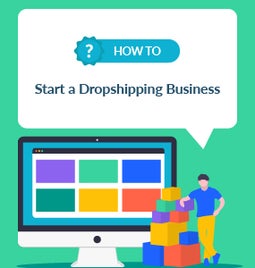4 Tips To Reduce Dropshipping Costs Amid Largest Tariff Changes
If you click to purchase a product or service based on our independent recommendations and impartial reviews, we may receive a commission. Learn more
The news of President Donald Trump’s tariff increases is hitting dropshipping businesses hard. Increased import fees are set to eat into profits and cause supply chain issues, which could have devastating long-term effects to businesses that don’t take action.
Tariffs remain outside of your control, but there are changes you can make to your dropshipping strategy to decrease the impact on your business. If you’re looking for ways to save money, I’ll go through my top suggestions of how you can reduce your dropshipping costs below.
1. Source from Low Tariff Countries
The tariff rates on your products will depend on where your dropshipping suppliers are located. The main country to avoid is China, whose rate has increased to a staggering 125%.
Instead, I’d recommend locating suppliers in either tariff-free or low-tariff countries, such as India, Singapore, Australia, and the United Kingdom.
Latest Update📢
There are around 60 countries threatened with higher rates, ranging between 11 and 50%. On April 9, Trump wrote a Truth Social post announcing a 90-day pause on these rates, meaning that a blanket 10% will apply to every country, excluding China.I would avoid switching to one of these at-risk countries since there is no guarantee as to their tariffs after the 90-day period. But if you currently import goods from these countries, this gives you more time to find suppliers in lower tariff countries before your profit margin takes a hit.
➡️Want to know how to find dropshipping suppliers? We break everything down here!
2. Use US Suppliers
If you want to completely cut import fees, the most obvious solution option would be to find a local US dropshipping supplier. Sourcing locally will also streamline your shipping process, so you’ll receive your products quickly and at a low delivery cost.
However, the downside is that local sellers often charge much higher prices. Don’t immediately jump ship, and be sure to add up all the costs involved before committing to a US seller, and compare them to overseas options. You may find the latter to be more cost effective, even with the tariff changes considered.
3. Negotiate With Your Suppliers
If you’re working with a private supplier, rather than a large public entity like AliExpress or DHgate, now’s your time to use your relationship to negotiate deals on your pricing. Dropshippers may be able to get lower prices for ordering products in bulk or guaranteeing their custom to that supplier for a fixed term.

4. Sell High-Margin Products
The new tariffs mean you’ll be paying a lot more for your products, which will consequently eat into your profit margin. A great way to combat this is to focus on selling high margin products – items that have a profit margin of over 30%. This will give you added security as tariffs fluctuate and help you to still make a profit.
Niche or personalized high-margin products are a great route to go down, since they have a higher perceived value, meaning that customers will be more understanding if you need to increase your prices.
Final Thoughts
The 90-day pause on tariff changes, which will end on July 8, provides a small window of time for dropshippers to make the preparatory changes to their strategy and reduce the impact on their business. Tariffs have been changing dramatically, so continue to monitor official sources such as the US Trade Representative during and after this period, and be open to reacting and adapting to any news quickly.





Leave a comment